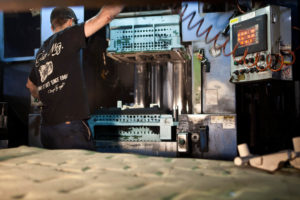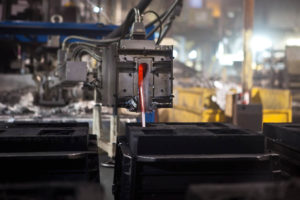The needs of prototyping in manufacturing are far different than for the production itself. You need fewer items. You need to be able to make changes, small or large, quickly and efficiently. One thing remains the same, though: Unless it is serving as little more than a 3-dimensional marketing tool, the prototype must still be functional. These aspects make sand casting ideal for prototyping applications, saving you time and money in the pre-production process.
Ways Sand Casting is Perfect for Prototyping

1. Mold Creation is Fast
The tooling process for sand casting is among the fastest of any type of casting. This keeps the time from pattern creation to part completion minimal, getting the prototype in your hands for testing as quickly as possible.
2. Sand Casting is less expensive for prototypes
Most of the material costs related to sand casting are in the metal for the part itself. The sand used in the molds is broken up and used again, minimizing waste. This helps keep the cost of sand casting cheaper for prototypes and limited runs than processes that use metal or other similar molds.
For permanent mold casting, for instance, the first part is by far the most expensive, with the average cost per unit decreasing with every part made from the same mold. The second and subsequent parts will be cheaper for permanent mold casting because sand casting requires a new mold for every part, but the difference in cost of the first part is great enough that sand casting offers cost savings for single or limited run prototypes.
3. Changeability and Versatility
The whole purpose of prototypes is for use while the product is still in the design or testing phase. That means that there is a good chance changes to the prototype will be needed.
Because, as mentioned, the molds are relatively fast and inexpensive to make, new prototypes can be made efficiently as needed thanks to testing and other concerns.

4. Sand Casting Creates a Usable Part
If all you need is something that looks like the part, then there are probably cheaper ways to go about it than sand casting. If you actually want to test the product, however, having a part that isn’t fully functional is worthless. Sand casting gives you a fully functioning metal part that can withstand the same rigors that the final parts will need to.
Contact LeClaire to Find Out More About Sand Casting for Prototyping
Interested in learning more about using sand casting to create a prototype for your business? Either fill out our contact form or call us at (563) 723-0544. We can also provide you with a quote for your upcoming prototyping project.

